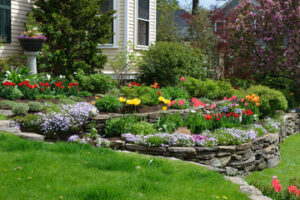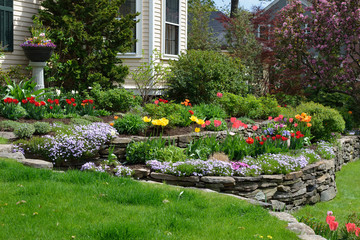Landscape design is a profession that involves blending nature and culture. It is a combination of landscape architecture and garden design. When a landscape designer is hired, they consult with the client, create plans, and produce construction-ready plans.

Landscape designs outdoor spaces to enhance the client’s property’s aesthetics, comfort, and convenience. They do this through a combination of hardscaping and garden design services. Designing a landscape involves a lot of research, including the study of the environment, construction and installation plans, and the client’s needs. As with most professions, there is a broad range of skills and training. Some designers specialize in particular areas, such as water features or plants. Others work in garden centers or municipalities.
If you’re interested in pursuing a career as a landscape architect, you’ll need to earn a professional license. Depending on where you live, there are varying requirements to become a licensed landscape architect. The licensing process ensures you have the skills to perform the job successfully. Landscape architects must have a degree from an accredited university and have a certain amount of work experience. Depending on the state, you may also need to complete continuing education.
To become a licensed landscape architect, you’ll need to take the Landscape Architecture Registration Examination (LARE). LARE is offered in December, June, and August three times a year. This exam tests your knowledge of issues such as site analysis, climate, and flora. After taking the exam, you’ll need to have two years of supervised work experience under a licensed landscape architect before you can apply for licensure. Many students attend four-year college programs or five-year master’s programs in landscape architecture. These programs focus on urban and regional planning, ecological systems, and advanced design techniques. In addition, many programs have internship opportunities.
Before a designer can design your outdoor space, they must first consult with you. This may require a meeting or a questionnaire and may involve several meetings. You’ll need to give your designer a clear idea of your desired aesthetic and budget, along with any other requirements. A good designer should be able to incorporate your vision into the final product. For example, you may want to have a focal point, such as a waterfall, bubbling fountain, or pergola with climbing vines. These features don’t have to be expensive, but they can add a nice touch to your yard.
Landscape designers are in the business of making the best out of their clients’ yards. They can create a variety of unique and exciting solutions to many of the most common landscaping challenges. The best landscape design consultations occur when the client and designer have the same goals. This will yield a more effective design for both parties.
One of the most important things a landscaper can do is leverage his or her contacts. For instance, if you are a homeowner, consider asking your landscaper for advice on how to trim the trees in your yard. This can be one of the most cost-effective and useful tips you can get. Another way to show a potential client that you have what it takes is to provide them with some free downloadable materials. These can be in the form of a brochure or even a blog post. You can also use these materials to generate leads. Whether it is a contractor or a neighbor, this can be an effective approach.
Landscape Designers produce construction-ready plans for a wide range of projects. These are a valuable asset in planning and constructing a landscaping project. Landscape designers usually provide an initial design that is refined to meet the client’s needs. They use drafting skills and advanced horticultural knowledge to translate a client’s vision into reality. Some of the responsibilities of a landscape architect include developing specifications, coordinating construction, and handling contract administration. The architect’s job is to ensure that the landscaping plan meets the developer’s objectives and adheres to the approved plans.
In the initial stages of designing a project, a landscape architect will interact with a client developer to determine the project’s scope. He will also research the site, taking notes on its flora and fauna. This information will help the architect develop a conceptual design and determine major issues. A landscape architect will outline the plan’s specifications and develop quantities during the design phase. The architect may also involve other consultants, such as water feature consultants and lighting designers.
